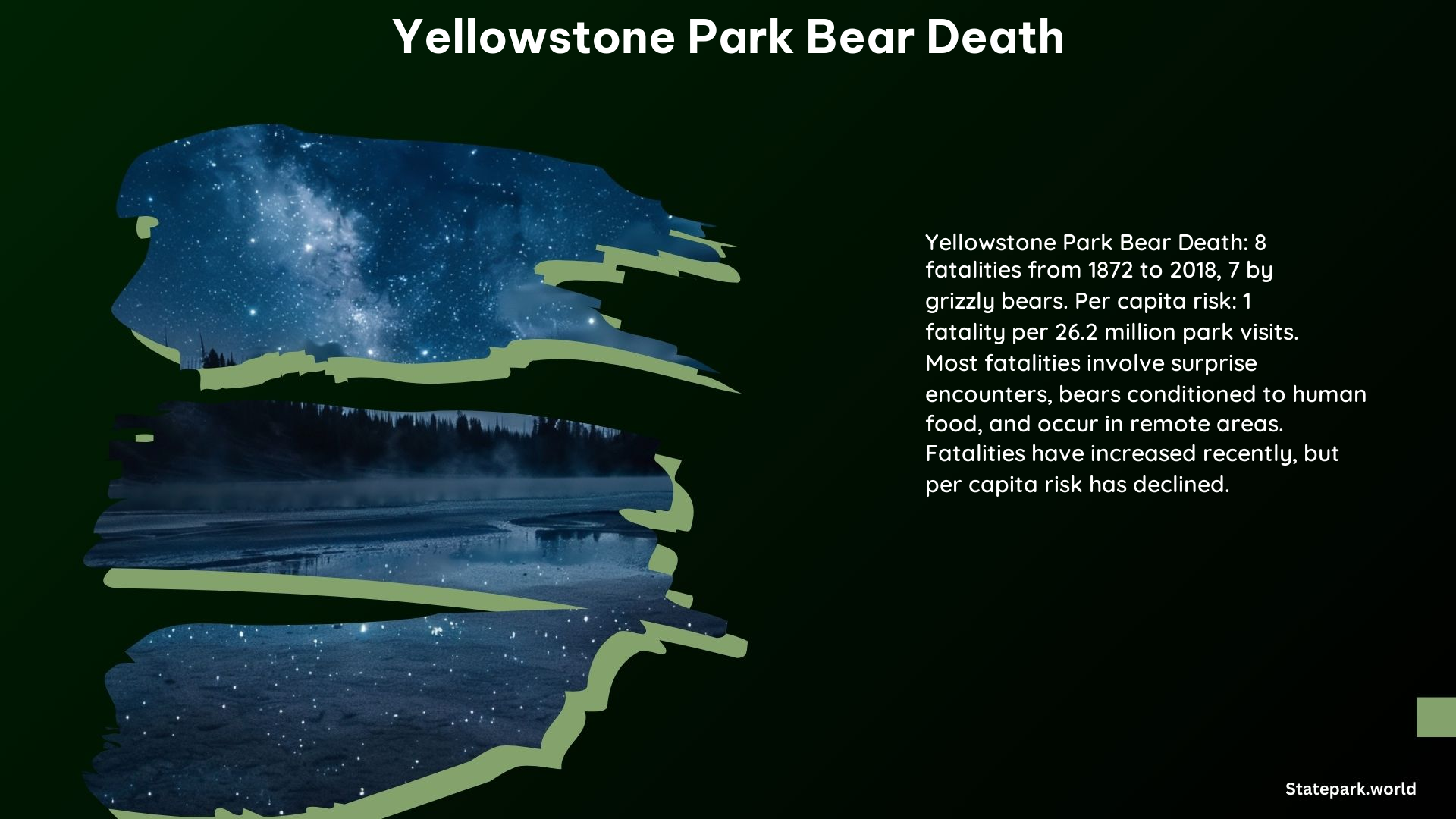In July 2023, a devastating incident occurred in Yellowstone National Park, where a 48-year-old woman named Amie Adamson was fatally mauled by a 10-year-old female grizzly bear. This tragic event has once again highlighted the importance of understanding the complex relationship between humans and bears in one of America’s most iconic national parks.
The Recent Incident
On July 15th, 2023, Amie Adamson was hiking near the park’s Hayden Valley when she encountered the grizzly bear. The bear, which was later euthanized after breaking into a nearby home in search of food, attacked and killed Adamson. This incident marked the eighth reported fatality due to bear attacks in Yellowstone National Park since 1872, with seven of these being caused by grizzly bears.
Historical Context

Yellowstone National Park has a long and complex history when it comes to bear-related incidents. According to the data, the per capita risk of being killed by a grizzly bear in Yellowstone is approximately 1 fatality for every 26.2 million park visits. While this may seem like a low risk, the park’s vast wilderness and the increasing grizzly bear population have led to more frequent encounters between humans and these powerful predators.
Prevention Measures
To mitigate the risk of bear attacks, Yellowstone National Park has implemented several measures to educate visitors and promote safe practices. These include:
- Hiking in groups of three or more people
- Staying alert and making noise in areas with poor visibility
- Carrying bear spray and knowing how to use it effectively
- Avoiding running during encounters with bears
- Maintaining a safe distance from bears and refraining from feeding them
Bear Population and Behavior
The grizzly bear population in the Yellowstone ecosystem has been steadily increasing, reaching 1,063 in 2021 from 136 in 1975. This expansion has led to more frequent encounters between bears and humans, posing challenges for both residents and visitors.
Most fatal bear attacks in Yellowstone involve surprise encounters and/or bears that have become conditioned to human foods. Only a few attacks are classified as predatory. Defensive reactions by bears are common, especially when they are protecting their cubs or territories.
Euthanization
When bears are involved in fatal attacks or exhibit predatory behavior, park officials often make the difficult decision to euthanize them. This decision is typically made after a careful evaluation of the bear’s behavior and the circumstances of the incident, with the primary goal of ensuring human safety.
By understanding these facts and taking the necessary precautions, visitors to Yellowstone National Park can minimize the risk of bear-related incidents and enjoy the park’s natural wonders safely. It is essential to remember that Yellowstone is home to a thriving bear population, and respecting their habitat and behavior is crucial for coexistence.
References:
– https://www.yellowstoneguidelines.com/whats-new/1442453113.html
– https://digitalcommons.usu.edu/hwi/vol16/iss3/8/
– https://www.washingtonpost.com/nation/2023/09/07/grizzly-bear-home-attack-euthanized-yellowstone/
– https://www.cbsnews.com/news/grizzly-bear-fatal-mauling-yellowstone-attack-idaho-killed-house-break-in/
– https://www.yellowstonepark.com/things-to-do/wildlife/killed-by-bears/
